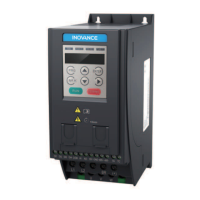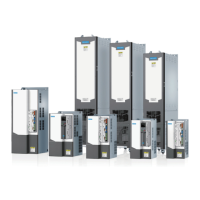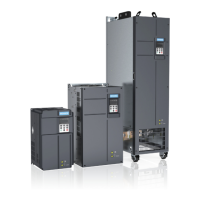Parameter Groups
‑189‑
Current detection range = F8‑38 ‑ F8‑39 x F1‑03 (Rated motor current) to F8‑38 +
F8‑39 x F1 03.
29: Current 2 reached
When the output current of the AC drive is within the detection range of F8‑40
(Detection level of current 2), the DO outputs an active signal.
Current detection range = F8‑40 ‑ F8‑41 x F1‑03 (Rated motor current) to F8‑40 +
F8‑41 x F1 03.
30: Timing reached
With the timing function (F8‑42) enabled, when the current running time of the AC
drive reaches the set time, the terminal outputs an active signal. The timing
duration is set by F8‑43 and F8‑44.
31: AI1 input limit exceeded
The terminal outputs an active signal when AI1 input is higher than the value of
F8‑46 (AI1 input voltage upper limit) or lower than the value of F8‑45 (AI1 input
voltage lower limit).
32: AC drive output load loss
The terminal outputs an active signal when load loss occurs.
33: Reverse running
The terminal outputs an active signal when the AC drive runs in the reverse
direction.
34: Zero current state
When the output current of the AC drive is within the zero‑current range for a time
exceeding F8‑35 (Zero current detection delay), the DO outputs an active signal.
Zero current detection range = 0 to F8‑34 x F1‑03
35: Module temperature reached
The terminal outputs an active signal when the inverter heatsink temperature
(F7‑07) reaches the value of F8‑47 (IGBT temperature reach).
36: Output current limit exceeded
When the output current of the AC drive is greater than F8‑36 (Output overcurrent
threshold) for a time exceeding F8‑37 (Output overcurrent detection delay), the
DO outputs an active signal.
37: Frequency lower limit reached (having output at stop)
The terminal outputs an active signal when the running frequency reaches the
frequency lower limit (F0‑14). The terminal also outputs the active signal when
the AC drive stops.
38: Alarm output (direct output at fault or alarm)
If a fault occurs on the AC drive and the AC drive continues to run upon fault, the
DO outputs an active signal.
For details about the fault protection action, see F9‑47 to F9‑50.

